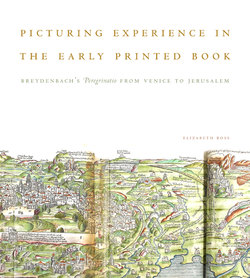Picturing Experience in the Early Printed Book

Реклама. ООО «ЛитРес», ИНН: 7719571260.
Оглавление
Elizabeth Ross. Picturing Experience in the Early Printed Book
Отрывок из книги
PICTURING EXPERIENCE IN
THE EARLY PRINTED BOOK
.....
Most of the discussion of Reuwich’s identity has centered around a debate over whether he should be identified with the Housebook Master and/or the Master of the Amsterdam Cabinet, the artist(s) behind two bodies of work that are often thought to stem from the same individual. The Housebook Master takes his name from his pen-and-ink illustrations in the Medieval Housebook, a manuscript with an assortment of texts about such topics as medicine, mining, and military strategy produced around 1475–90 for a German noble court in the Rhine region. The Master of the Amsterdam Cabinet created an unusual and inventive collection of drypoints, most of which are held in the Rijksmuseum (figures 6, 7). Several paintings also seem to belong to the Housebook Master’s corpus, namely the double portrait of the Gotha Lovers and two sets of religious painting for churches in Mainz and Frankfurt, and scholars have vigorously contested the relationship among these three groups of works: illuminations, drypoints, and paintings.36 Adriaan Pit made the first comparison to Erhard Reuwich’s woodcuts in 1891: the mounted Turk in a print by the Master of the Amsterdam Cabinet resembles the zurna-and drum-playing riders in the Peregrinatio’s Ottoman military band (figures 7, 8).37 Since then, a meticulous comparison of the style and imagery of the Peregrinatio’s images with the works attributed (tentatively and firmly) to the Housebook Master and/or the Master of the Amsterdam Cabinet has fueled even more discussion.
Through this debate, two arguments have been put forward to support the Masters’ identification as Reuwich. First, the coincidence of the artists’ biographies provides circumstantial evidence. Certainly, these personalities were active in the Rhine region at the same time, working for the lower nobility. The patron of the Gotha Lovers, for example, was most likely Count Philipp von Hanau-Münzenberg, who traveled with Breydenbach’s handwritten pilgrimage instructions and who in 1490 would become the father-in-law of Count Johann’s brother, the new Count Philipp von Solms-Lich.38 An artist of Reuwich’s quality, entrusted with a project like the Peregrinatio, should have a larger oeuvre, the thinking goes, just as the Masters should have a name.39 The second argument discerns evidence of a single hand in the similarities of style and motif in the Masters’ work and Reuwich’s illustrations for the Peregrinatio and the Gart der Gesundheit. Reuwich’s hatching—most obviously the fuzz on the jaw of the lady of the Peregrinatio frontispiece—recalls peculiarities of the Master of the Amsterdam Cabinet’s drypoints, where the modeling is built up through short strokes that leave a sketchy corona around the figure. With both Reuwich and the Master, this hatching suggests an artist attempting to transfer the techniques of a draftsman to a new print medium without the training in engraving that most late fifteenth-century intaglio printmakers took from their background as goldsmiths or sons of goldsmiths.
.....